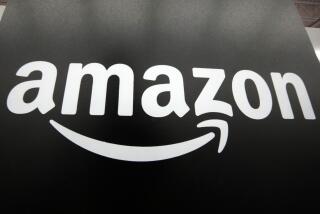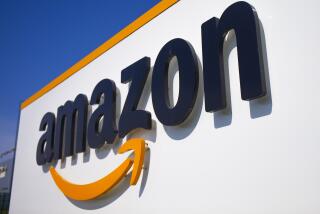Web Retailers’ ‘Gross Profit’ Questioned
WASHINGTON — The Securities and Exchange Commission may make Amazon.com Inc. and other Internet retailers change their accounting practices in a way that could cut “gross-profit” figures, which many consider an important indicator of business potential.
The SEC is questioning Amazon.com, EToys Inc. and possibly others about how they account for the cost of distribution centers where goods are stored and packaged for delivery, according to regulatory filings by the companies. So-called fulfillment costs aren’t now counted when these Web retailers calculate gross profit--a measure of the company’s sales minus the cost of selling its goods.
The SEC has told companies it may make them count some distribution expenses as a “cost of sales,” subtracting them before arriving at the gross-profit number on financial statements, Amazon.com said in a filing. That change, for Amazon.com and others, could turn gross profits into multimillion-dollar gross losses.
Amazon.com, EToys and other Web retailers now put fulfillment costs in the category of sales and marketing expenses, which aren’t included among costs that go into the gross-profit calculation.
Shifting the fulfillment costs to a different line on financial statements wouldn’t have any effect on a company’s sales, or on its net profit or net loss.
Few Web retailers actually turn a bottom-line net profit. Because of that, investors and analysts may look to the gross-profit figure as an indicator showing how well a company can make money from its basic business operations.
Analysts also look at a company’s gross margin, which shows the percentage of sales that were counted as gross profit. In Amazon.com’s case, the change being considered by the SEC would have cut its fourth-quarter gross margin to a minus-3%, from 13%, said David Zale, an analyst at Sands Brothers & Co.
Earlier this month, Amazon said it expected its gross margin, as now calculated, to “approach 20%” in the first quarter of this year and to continue increasing during the year.
Amazon spokeswoman Patty Smith declined to comment on what effect the SEC’s contemplated change would have on the company’s gross margin, but said “the accounting method we’re using is standard among retailers online and traditional bricks-and-mortar retailers.”
Kevin Silverman, an ABN Amro analyst, agreed, saying catalog retailers have traditionally reported distribution and fulfillment costs along with marketing expenditures.
More to Read
Inside the business of entertainment
The Wide Shot brings you news, analysis and insights on everything from streaming wars to production — and what it all means for the future.
You may occasionally receive promotional content from the Los Angeles Times.










